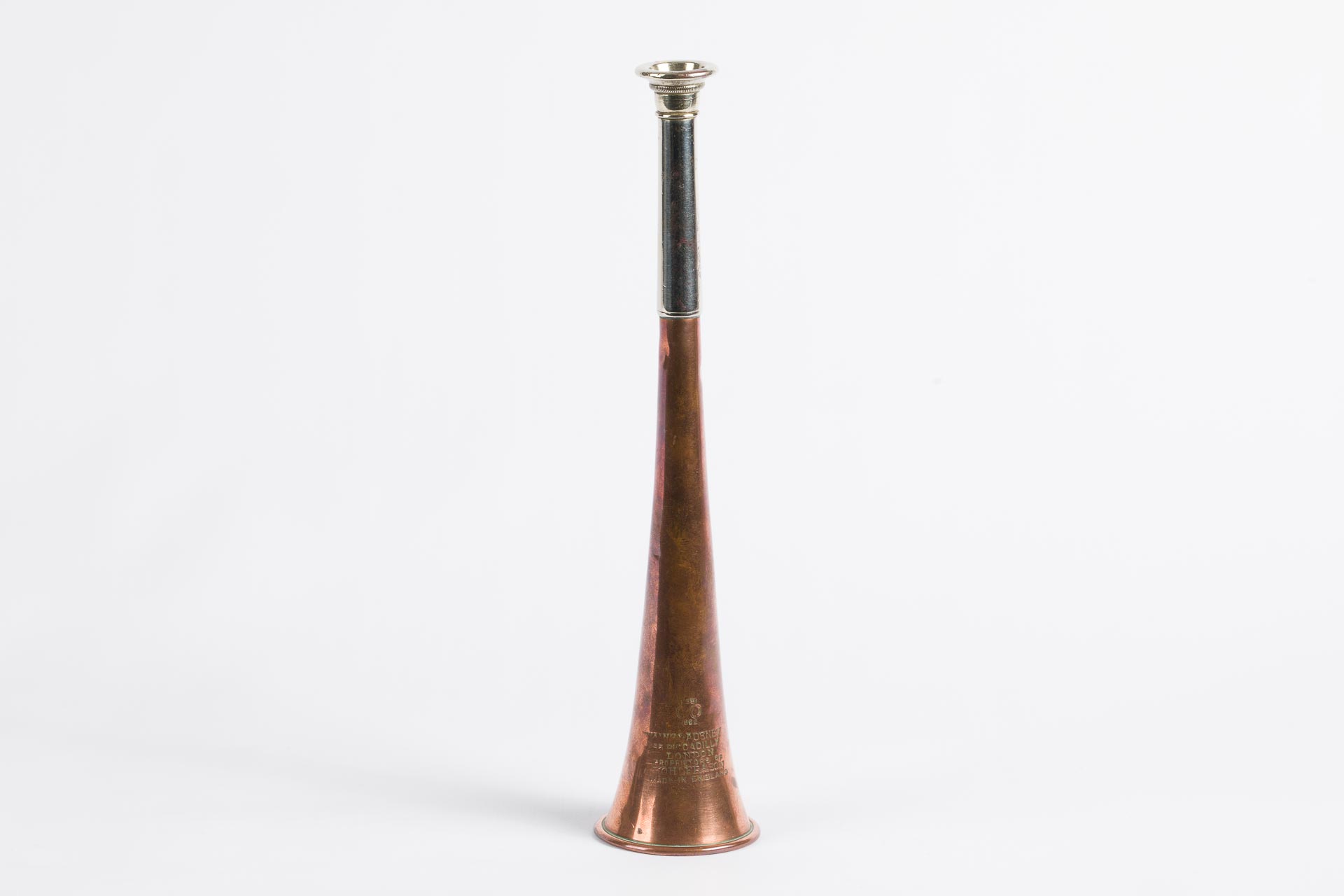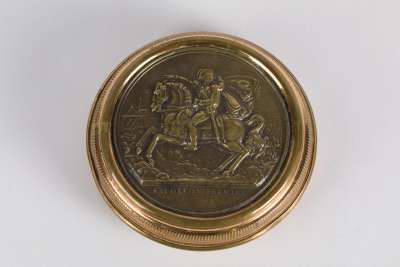This antique hunting horn is a striking example of 19th-century craftsmanship, originating from England. Crafted from copper and nickel, the horn is an artefact of the renowned Swaine & Adeney, who were the proprietors of Kohler & Son, as evidenced by the stamp imprinted on the instrument. The horn also bears an exhibition medal from 1862, a testament to its historical significance. With its sleek, curved design and polished metal surface, this hunting horn is not only functional but also a piece of history, reflecting the artistry and utility of its time.
Condition Report
The hunting horn is in a condition consistent with its age and historical use. Surface wear is present, which is expected for an item of this period and use; however, it does not detract from its overall historical value or aesthetic appeal. The copper and nickel materials have aged gracefully, maintaining a level of integrity and charm indicative of its era. The stamp and exhibition medal are still clearly visible, offering insight into the horn's provenance and esteemed maker. Overall, this piece remains a sturdy and evocative example of 19th-century English craftsmanship.
Dimensions
Weight: 106gm, Length: 24cm, Width: 5cm.
The Hunting Horn: A Tool for the Hunt
Traditionally, the hunting horn was an essential tool in hunting expeditions, used to communicate across distances and coordinate with fellow hunters. The sound of the horn would signal various stages of the hunt, from the start to the successful capture of prey. This particular horn, with its robust construction and clear sound, would have played a critical role in the hunt, allowing for effective communication in the field. Its design reflects not only functionality but also an element of ceremony and tradition, as hunting was a significant social event during its time of use.
Example of 19th-Century English Craftsmanship
This hunting horn is a fine representation of 19th-century English craftsmanship, a period marked by innovation and quality in metalwork. The use of copper and nickel was typical of the time, offering durability and a pleasing appearance. The horn's design is both functional and elegant, with a simplicity that highlights its purpose while remaining visually appealing. The exhibition medal from 1862 further underscores its significance, suggesting it was showcased for its design and craftsmanship, likely admired for both its utility and its artistry.
The Craftsmanship of Copper and Nickel
The creation of this hunting horn involved the skilled manipulation of copper and nickel, materials chosen for their resilience and acoustic properties. The process would have included the shaping and joining of these metals to create a smooth, curved form capable of producing clear, resonant tones. The stamping of the maker's mark and exhibition medal would have required precision and care, ensuring that these identifying features remained legible. This attention to detail and quality of workmanship speaks to the expertise of artisans during this period, reflecting a dedication to both function and form.
Crafted by Swaine & Adeney
Swaine & Adeney, established in 1750, are celebrated for their high-quality equestrian and sporting goods. As proprietors of Kohler & Son, they combined tradition with innovation, producing items that were both functional and finely crafted. This hunting horn exemplifies their commitment to excellence, with its clear markings and exhibition medal from 1862 highlighting its distinguished origin. Swaine & Adeney's reputation for quality ensures that this horn is not only a piece of history but also a testament to the enduring legacy of their craftsmanship.
Collected by Enthusiasts of Hunting Memorabilia
This hunting horn is a sought-after piece among collectors of hunting memorabilia, offering a tangible connection to the traditions and practices of the past. The combination of its maker's prestige, historical significance, and craftsmanship makes it an attractive addition to any collection. Collectors value such items for their ability to tell stories of bygone eras, providing insight into the social and cultural practices of the time. This horn, with its exhibition medal and clear provenance, is a prime example of the type of artefact that continues to captivate and intrigue collectors worldwide.














